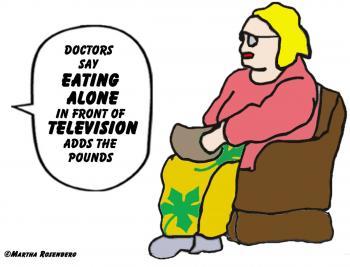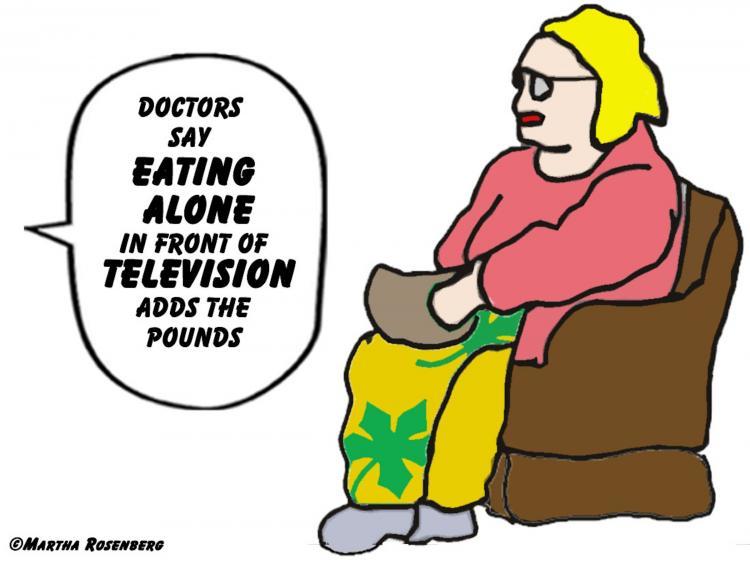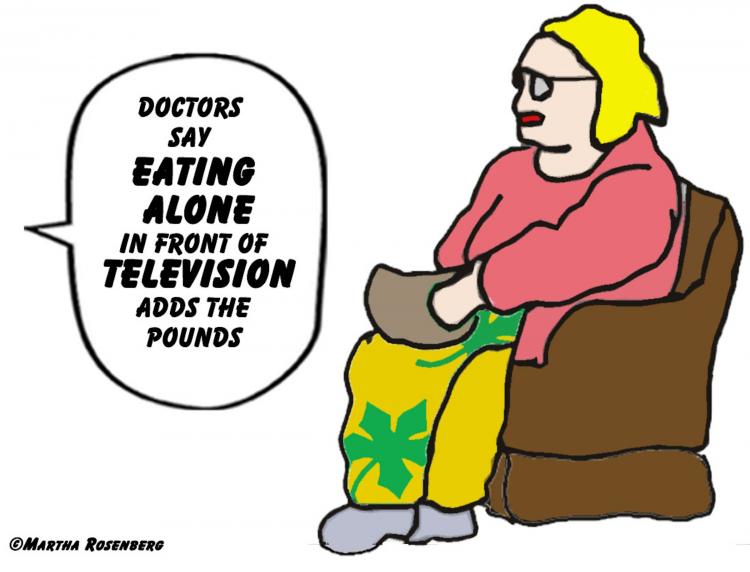In a report released last fall by the Organization for Economic Co-Operation and Development (OECD), the United States is the fattest of 33 countries. Mexico and New Zealand are runners-up. India and Indonesia are the thinnest.
Luckily the report didn’t break U.S. obesity down state by state, or we would have further shame.
Seventy percent of Americans are now overweight says the report, a number that will balloon to 75 percent by 2020—pun intended.
And 10 years after that? By 2030, 86 percent of Americans could be overweight, says an article in the journal Obesity.
Food researchers indict the couch-and-mouse lifestyle, with its ubiquitous commercials for high-calorie foods, for expanding haunches, especially in kids. After all, it has been decades since moms locked kids outside with a bottle of water and the instructions “Don’t come back until dinner.”
Nor did kids have cell phones. One grandmother says she took the grandkids to the seashore only to find they wouldn’t leave the motel room because of their attachments to electronic gadgets.
But the demise of the family dinner is also a factor says the Star-Tribune. Structured, please-pass-the peas family meals gave a sense of safety and security to children at the same time they modeled normal eating. When people’s dinner date is the TV, they often scarf down the wrong food because they lose track or are not watching.
In fact, the National Center on Addiction and Substance Abuse found that substance abuse itself is lower in families that eat together three times a week, food being many people’s preferred substance.
Of course, there are other reasons for the national binge.
Food deserts (not “desserts,” though related) make it hard for people to stay thin. A 2010 study by the University of California, Berkeley, and Columbia University found ninth graders are fatter when their schools are close to fast-food restaurants.
And The New York Times found that both adults and children who ride public transit are thinner. Walk a lot seems to be the message.
Size inflation also contributes to obesity and its denial. Women’s size five is now size zero, and stretchy leggings always fit. And how about hip-hop clothes, which aren’t supposed to fit anyway?
More food is available today with snacks in banks, bookstores, body shops, and hospitals. Of course, there are the legions of smokers who are eating more food as they are trying to quit the cigarette habit.
They may be trading one habit for another.
Martha Rosenberg is a freelance writer who lives in Chicago.
Luckily the report didn’t break U.S. obesity down state by state, or we would have further shame.
Seventy percent of Americans are now overweight says the report, a number that will balloon to 75 percent by 2020—pun intended.
And 10 years after that? By 2030, 86 percent of Americans could be overweight, says an article in the journal Obesity.
Food researchers indict the couch-and-mouse lifestyle, with its ubiquitous commercials for high-calorie foods, for expanding haunches, especially in kids. After all, it has been decades since moms locked kids outside with a bottle of water and the instructions “Don’t come back until dinner.”
Nor did kids have cell phones. One grandmother says she took the grandkids to the seashore only to find they wouldn’t leave the motel room because of their attachments to electronic gadgets.
But the demise of the family dinner is also a factor says the Star-Tribune. Structured, please-pass-the peas family meals gave a sense of safety and security to children at the same time they modeled normal eating. When people’s dinner date is the TV, they often scarf down the wrong food because they lose track or are not watching.
In fact, the National Center on Addiction and Substance Abuse found that substance abuse itself is lower in families that eat together three times a week, food being many people’s preferred substance.
Of course, there are other reasons for the national binge.
Food deserts (not “desserts,” though related) make it hard for people to stay thin. A 2010 study by the University of California, Berkeley, and Columbia University found ninth graders are fatter when their schools are close to fast-food restaurants.
And The New York Times found that both adults and children who ride public transit are thinner. Walk a lot seems to be the message.
Size inflation also contributes to obesity and its denial. Women’s size five is now size zero, and stretchy leggings always fit. And how about hip-hop clothes, which aren’t supposed to fit anyway?
More food is available today with snacks in banks, bookstores, body shops, and hospitals. Of course, there are the legions of smokers who are eating more food as they are trying to quit the cigarette habit.
They may be trading one habit for another.
Martha Rosenberg is a freelance writer who lives in Chicago.








